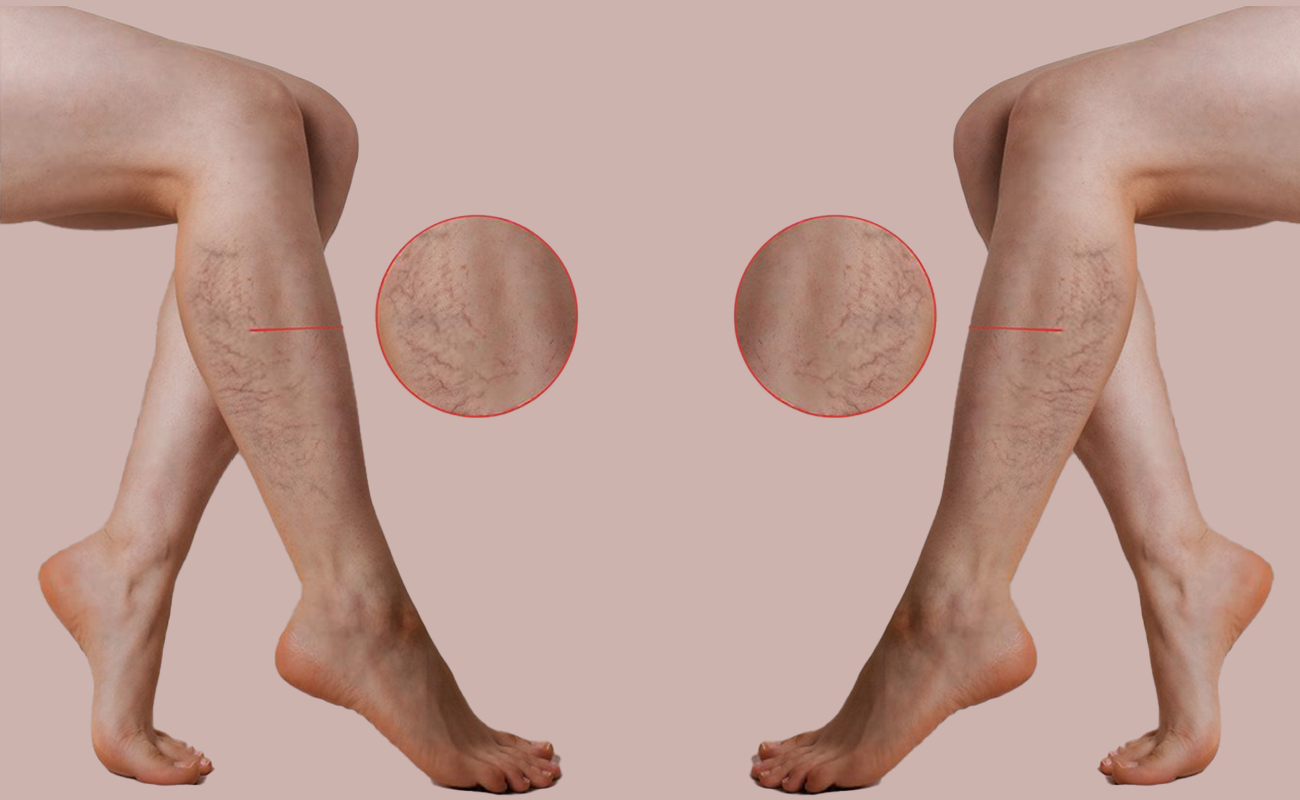Spider Veins A Common Vein Condition
What Are Spider Veins?
Spider veins are small, thin, web-like veins that appear on the surface of the skin, typically on the face or legs. Unlike varicose veins, spider veins are smaller and usually not painful, but they can be a cosmetic concern for many individuals.


What Are the Risk Factors for Spider Veins?
- Genetics: A family history of spider veins increases the risk.
- Age: They become more common with age as veins lose elasticity.
- Sun Exposure: Excessive sun exposure can damage skin and veins.
- Hormonal Changes: Pregnancy, menopause, or hormonal medications.
- Prolonged Sitting or Standing: Poor circulation over time can contribute.
Before & after the treatment


We Know You Have Questions and Concerns—We Have the Answers
Why Do Spider Veins Occur?
Spider veins develop when blood pools in smaller veins near the skin surface due to weak or damaged valves.
Do Men Get Spider Veins?
Yes, spider veins can affect men, though they are more common in women.
Are Spider Veins Dangerous?
Spider veins are generally harmless but can sometimes indicate underlying circulation issues.
What Are the Treatment Options for Spider Veins?
Treatments include sclerotherapy, laser therapy, and lifestyle changes to improve circulation.
Can Spider Veins Be Prevented?
While not entirely preventable, you can reduce your risk by:
When Should I See a Doctor?
Consult a specialist if your spider veins: